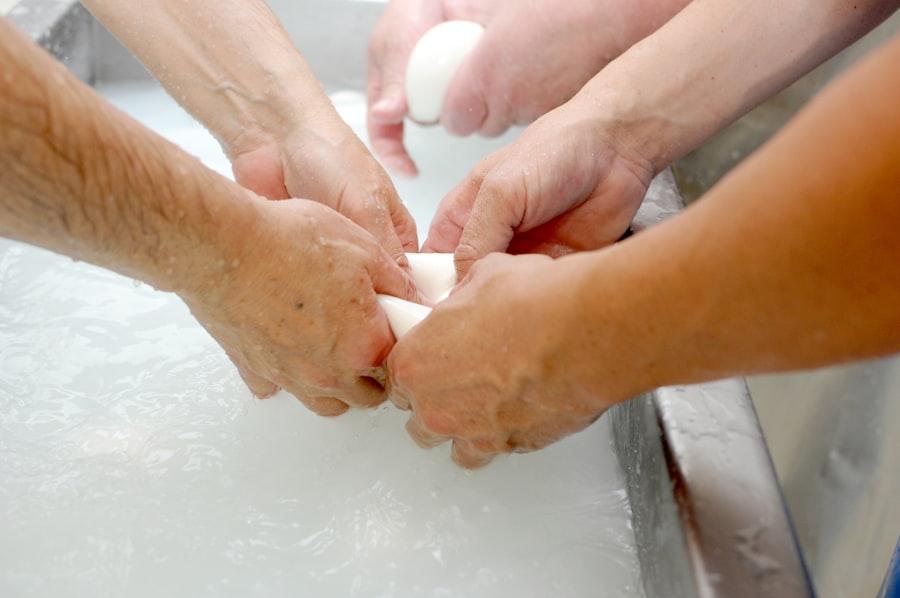As an athlete and fitness enthusiast, I have always been on the lookout for effective recovery methods that can enhance my performance and overall well-being. One technique that has gained significant attention in recent years is ice bath therapy, also known as cold water immersion. This practice involves submerging the body in ice-cold water for a specific duration, and it has been embraced by athletes across various sports disciplines.
The allure of ice bath therapy lies not only in its potential to alleviate muscle soreness but also in its ability to rejuvenate the body and mind after intense physical exertion. The concept of using cold water for recovery is not new; it has been utilized for centuries in various cultures. However, with the rise of scientific research and anecdotal evidence supporting its benefits, ice bath therapy has become a staple in many training regimens.
As I delved deeper into this practice, I discovered that it is not merely a trend but a scientifically backed method that can significantly impact recovery and performance. In this article, I will explore the science behind ice bath therapy, its benefits for muscle recovery, and how to properly incorporate it into my training routine.
Contents
- 1 The Science Behind Ice Bath Therapy
- 2 Benefits of Ice Bath Therapy for Muscle Recovery
- 3 How to Properly Administer an Ice Bath
- 4 Precautions and Considerations for Ice Bath Therapy
- 5 Ice Bath Therapy for Injury Prevention
- 6 Incorporating Ice Bath Therapy into Your Training Routine
- 7 Maximizing Recovery with Ice Bath Therapy
- 8 FAQs
Key Takeaways
- Ice bath therapy involves immersing the body in cold water to aid in muscle recovery and injury prevention.
- The science behind ice bath therapy lies in its ability to reduce inflammation and muscle soreness, as well as improve circulation and promote healing.
- Ice bath therapy can benefit muscle recovery by reducing muscle soreness, improving circulation, and decreasing inflammation.
- Properly administering an ice bath involves using cold water (10-15 degrees Celsius) for 10-15 minutes immediately after intense exercise.
- Precautions for ice bath therapy include avoiding prolonged exposure, monitoring for signs of hypothermia, and consulting a healthcare professional for certain medical conditions.
The Science Behind Ice Bath Therapy
Understanding the science behind ice bath therapy has been a fascinating journey for me. When I immerse myself in cold water, my body undergoes several physiological responses. The primary mechanism at play is vasoconstriction, where blood vessels narrow in response to the cold.
This process reduces blood flow to the muscles, which helps to minimize inflammation and swelling. As I emerge from the ice bath and my body warms up again, the blood vessels dilate, allowing fresh blood to flow back into the muscles. This influx of oxygen and nutrients aids in the recovery process.
Research has shown that cold exposure can also influence the release of certain hormones and neurotransmitters. For instance, the cold stimulates the release of norepinephrine, a hormone that can enhance mood and focus. This aspect of ice bath therapy resonates with me, as I often find myself feeling invigorated and mentally refreshed after a session.
Additionally, studies suggest that cold exposure may help reduce muscle damage and soreness by decreasing the production of inflammatory markers in the body. This scientific foundation has solidified my belief in the efficacy of ice bath therapy as a valuable tool for recovery.
Benefits of Ice Bath Therapy for Muscle Recovery

The benefits of ice bath therapy for muscle recovery are numerous and compelling. One of the most significant advantages I have experienced is the reduction of delayed onset muscle soreness (DOMS). After intense workouts or competitions, I often find my muscles feeling fatigued and sore.
However, incorporating ice baths into my recovery routine has noticeably alleviated this discomfort. The cold water helps to numb the pain and reduce inflammation, allowing me to bounce back more quickly. Moreover, ice bath therapy has been shown to enhance my overall recovery time.
By minimizing muscle soreness and inflammation, I can return to training sooner and with greater intensity. This aspect is particularly crucial for athletes like me who are constantly pushing their limits. Additionally, I have noticed improved range of motion and flexibility after ice baths, which further aids in my performance during subsequent workouts.
The combination of these benefits makes ice bath therapy an essential component of my recovery strategy.
How to Properly Administer an Ice Bath
| Metrics | Recommendation |
|---|---|
| Water Temperature | Between 10-15 degrees Celsius (50-59 degrees Fahrenheit) |
| Duration | 10-15 minutes |
| Body Part Immersion | Entire body or specific area of injury |
| Precautions | Monitor for signs of hypothermia, especially in young or elderly individuals |
| Benefits | Reduces inflammation, relieves muscle soreness, and promotes recovery |
Administering an ice bath may seem straightforward, but there are specific guidelines I follow to ensure I reap the maximum benefits while minimizing any potential risks. First and foremost, I prepare my ice bath by filling a tub with cold water and adding ice until the temperature reaches around 50-59°F (10-15°C). This temperature range is optimal for achieving the desired physiological effects without causing excessive discomfort or risk of hypothermia.
Once I am ready to enter the ice bath, I take a moment to mentally prepare myself for the initial shock of the cold water. It’s essential to ease into the experience rather than jumping in all at once. I typically submerge myself up to my waist or chest, depending on my comfort level and the specific areas I want to target for recovery.
I aim to stay in the ice bath for about 10-15 minutes, as this duration has been shown to be effective without being overly taxing on the body. During this time, I focus on my breathing and try to relax, allowing my body to adapt to the cold.
Precautions and Considerations for Ice Bath Therapy
While ice bath therapy offers numerous benefits, it is crucial for me to be aware of certain precautions and considerations before diving in. One of the primary concerns is the risk of hypothermia, especially if I stay in the cold water for too long or if the water temperature is excessively low. To mitigate this risk, I always monitor my body’s response during the session and have a plan in place for warming up afterward.
Additionally, individuals with certain medical conditions should consult a healthcare professional before engaging in ice bath therapy. Conditions such as cardiovascular issues or cold sensitivity can pose risks when exposed to extreme temperatures. It’s essential for me to listen to my body and recognize when something doesn’t feel right.
If I experience any unusual symptoms during or after an ice bath, such as numbness or excessive shivering, I make sure to exit the water immediately and warm up gradually.
Ice Bath Therapy for Injury Prevention

In addition to aiding recovery, I have found that ice bath therapy can play a significant role in injury prevention. The cold exposure helps reduce inflammation not only after workouts but also as a proactive measure before engaging in intense physical activity. By incorporating ice baths into my routine before competitions or strenuous training sessions, I can prepare my muscles and joints for the demands ahead.
Furthermore, regular exposure to cold water can enhance my body’s resilience to stressors. This adaptation may help reduce the likelihood of injuries caused by overexertion or strain during workouts. As I continue to push my limits in training, knowing that I have a reliable method for injury prevention gives me peace of mind and allows me to focus on improving my performance without fear of setbacks.
Incorporating Ice Bath Therapy into Your Training Routine
Integrating ice bath therapy into my training routine has been a game-changer for me. To maximize its benefits, I have developed a structured approach that aligns with my workout schedule. Typically, I reserve ice baths for post-workout sessions or after particularly grueling training days.
This timing allows me to capitalize on the recovery benefits while ensuring that my muscles are adequately cooled down after exertion. I also find it helpful to create a routine around my ice baths. For instance, after completing a workout, I take time to hydrate and refuel before heading into the ice bath.
This practice not only enhances my recovery but also allows me to mentally transition from training mode to recovery mode. Additionally, I keep track of how my body responds to different durations and temperatures during ice baths so that I can fine-tune my approach over time.
Maximizing Recovery with Ice Bath Therapy
In conclusion, ice bath therapy has become an integral part of my recovery regimen as an athlete. The science behind its effectiveness is compelling, and the benefits I have experienced firsthand are undeniable. From reducing muscle soreness and inflammation to enhancing overall recovery time, this practice has transformed how I approach training and performance.
As I continue to explore new ways to optimize my recovery strategies, I remain committed to incorporating ice baths into my routine. By understanding how to properly administer them and being mindful of precautions, I can maximize their benefits while minimizing risks. Ultimately, ice bath therapy has empowered me to push my limits while ensuring that I remain healthy and injury-free on my athletic journey.
Ice bath therapy has gained popularity for its potential benefits in reducing muscle soreness and speeding up recovery after intense workouts. However, some individuals have reported experiencing headaches after cold immersion sessions. For those interested in understanding this phenomenon, a related article titled “Cold Plunge Headaches” delves into the possible causes and solutions for headaches associated with cold water therapy. You can read more about it by visiting the article through this link. This resource provides valuable insights for anyone looking to optimize their cold immersion experience while minimizing any adverse effects.
FAQs
What is ice bath therapy?
Ice bath therapy, also known as cold water immersion, involves immersing the body in cold water for a short period of time, typically between 10 to 15 minutes. This therapy is often used by athletes and individuals seeking muscle recovery and pain relief.
What are the benefits of ice bath therapy?
Ice bath therapy is believed to help reduce muscle soreness, inflammation, and swelling. It may also improve circulation, speed up recovery after intense physical activity, and provide a sense of rejuvenation.
How does ice bath therapy work?
The cold water in an ice bath causes vasoconstriction, which narrows the blood vessels and reduces blood flow to the muscles. This can help decrease inflammation and swelling, and may also numb nerve endings to provide pain relief.
Are there any risks or side effects associated with ice bath therapy?
While ice bath therapy can be beneficial, it may not be suitable for everyone. Prolonged exposure to cold water can lead to hypothermia, and individuals with certain medical conditions such as heart problems or Raynaud’s disease should avoid ice bath therapy. It’s important to consult a healthcare professional before trying ice bath therapy.
How should ice bath therapy be done?
To perform ice bath therapy, fill a tub with cold water and add ice to lower the temperature. The water temperature should be around 50 to 59 degrees Fahrenheit (10 to 15 degrees Celsius). Immerse the body, focusing on the areas of muscle soreness or fatigue, for 10 to 15 minutes. It’s important to gradually acclimate the body to the cold water and to monitor for any signs of discomfort or distress.
This website may contain affiliate links. As an affiliate, we may earn a commission from qualifying purchases at no additional cost to you.

